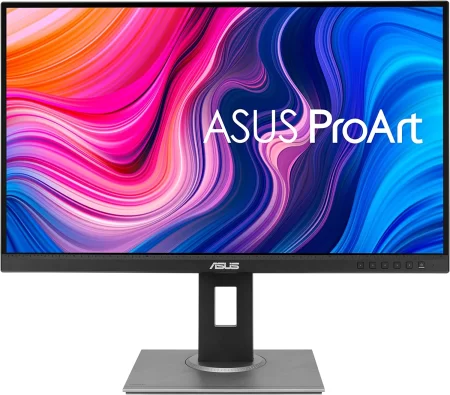Hey there, music enthusiasts and producers! Are you looking for the best computer monitor for your music production setup? As someone who understands the importance of having a top-notch display when it comes to editing and mixing tracks, I’m here to help you find the perfect monitor to elevate your music production experience.
Whether you’re a professional producer or a budding artist, a good monitor can make all the difference in ensuring that your music sounds its absolute best.
So, let’s dive into the world of computer monitors for music production and discover what features and factors you should consider to find your ideal match.
At a Glance:
best computer monitor for music production
| Design | Best Monitor | Retailer |
|---|---|---|
Best Pick 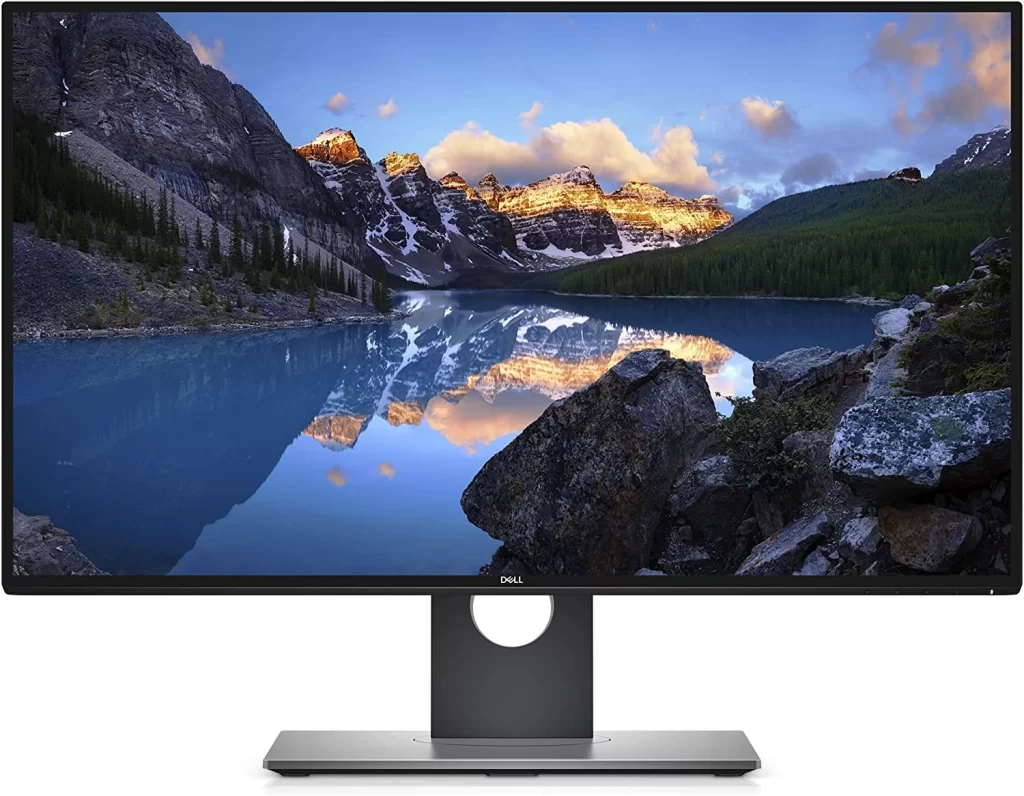 | Check Price | |
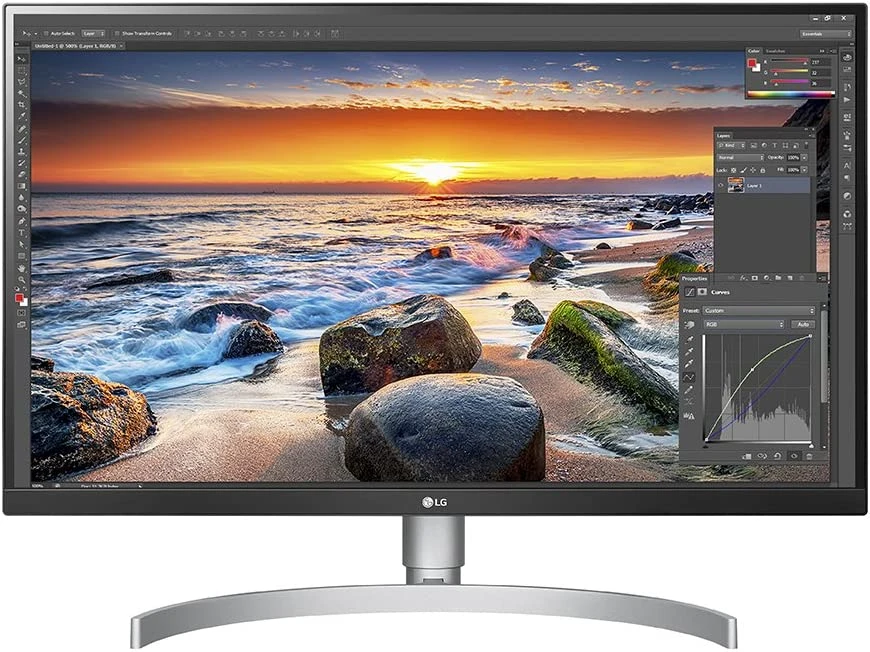 | Check Price | |
Staff Pick 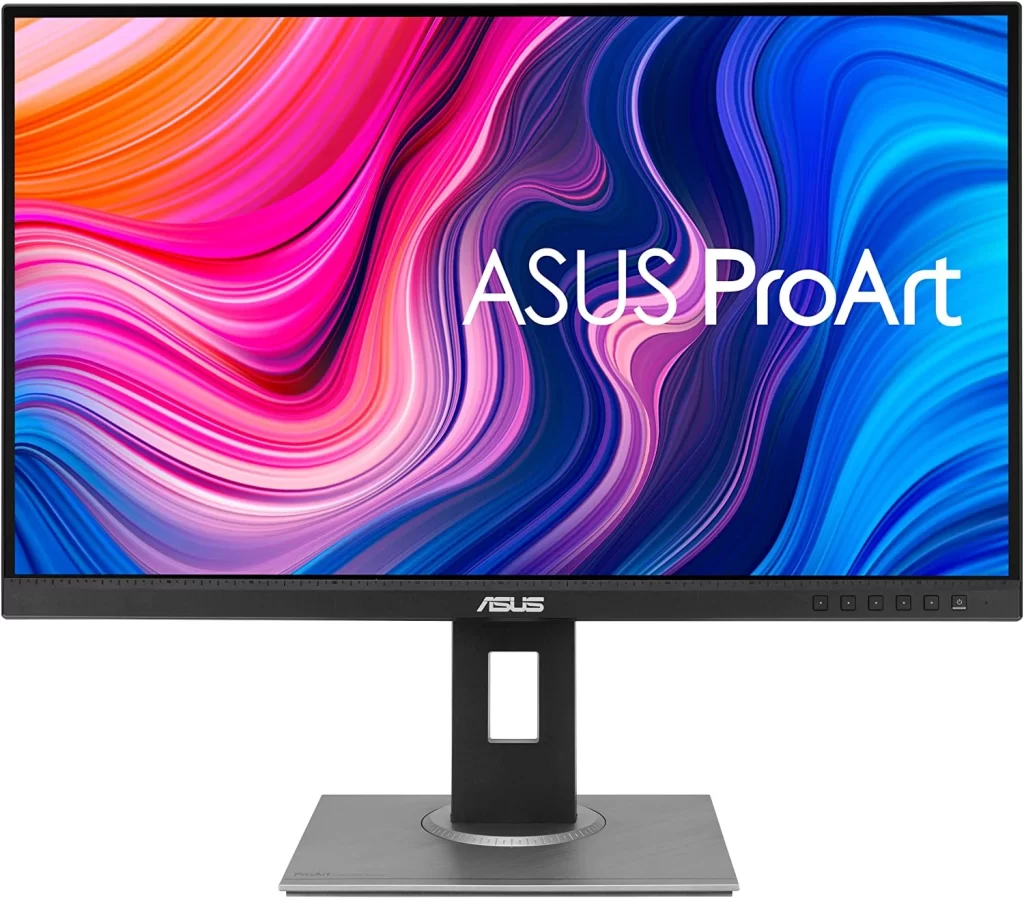 | Check Price | |
 | Check Price | |
Budget Pick 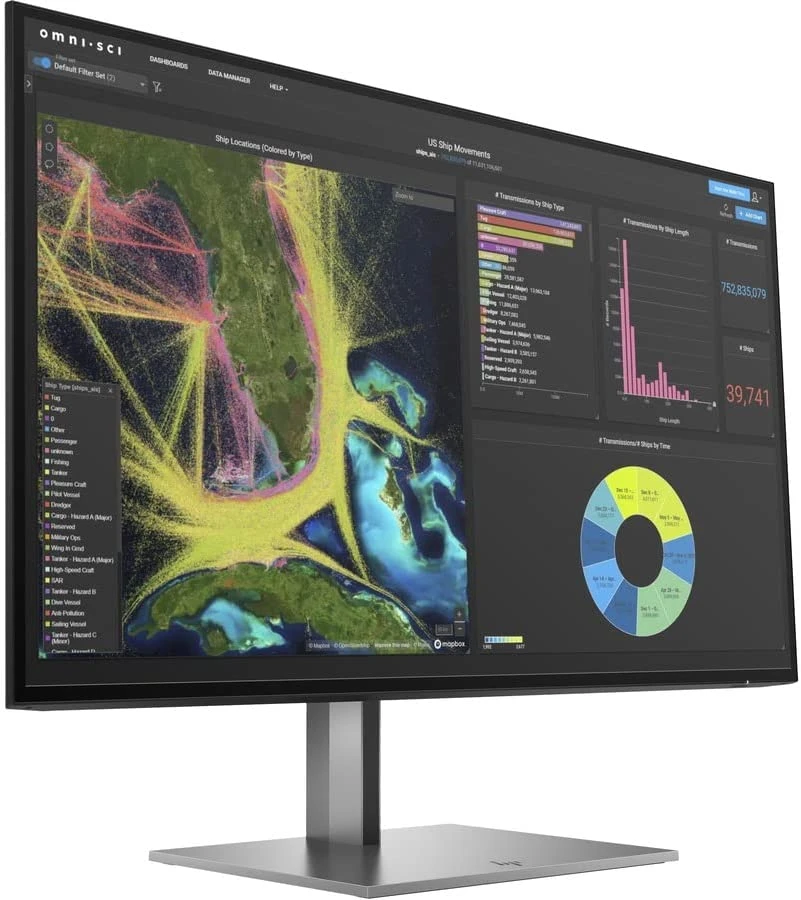 | Check Price | |
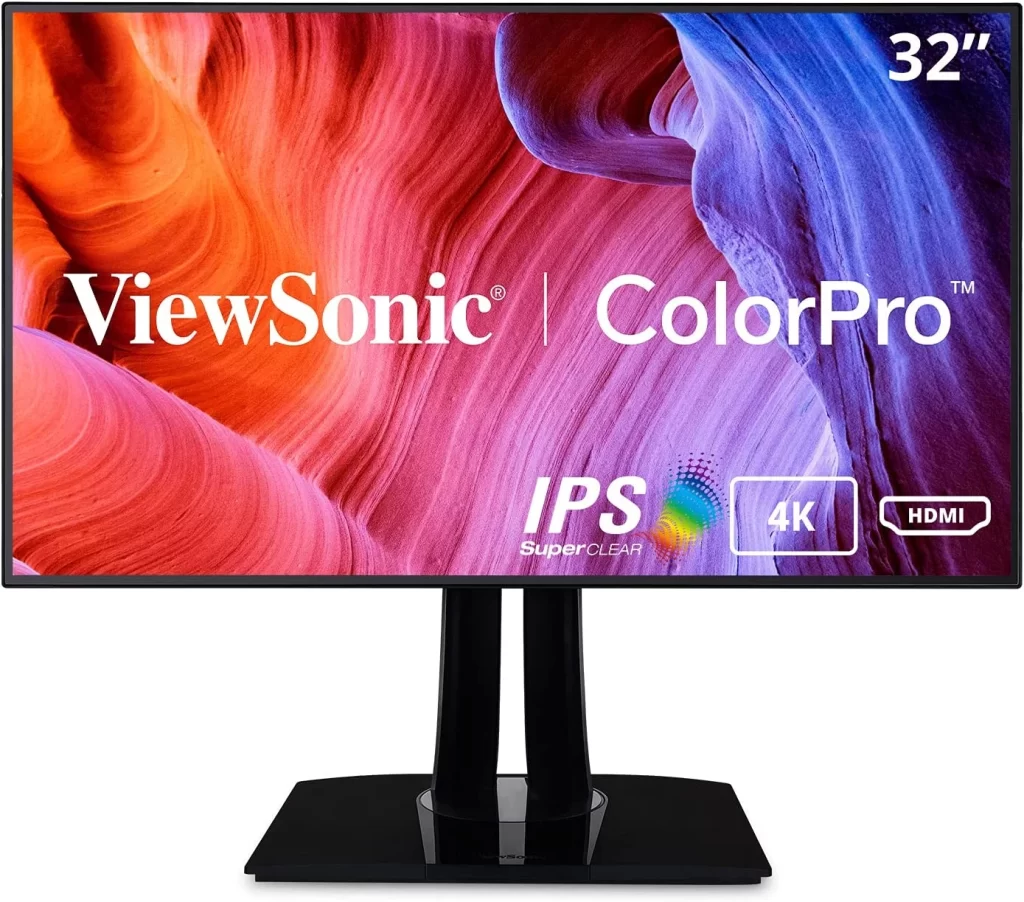 | Check Price | |
Best Pick 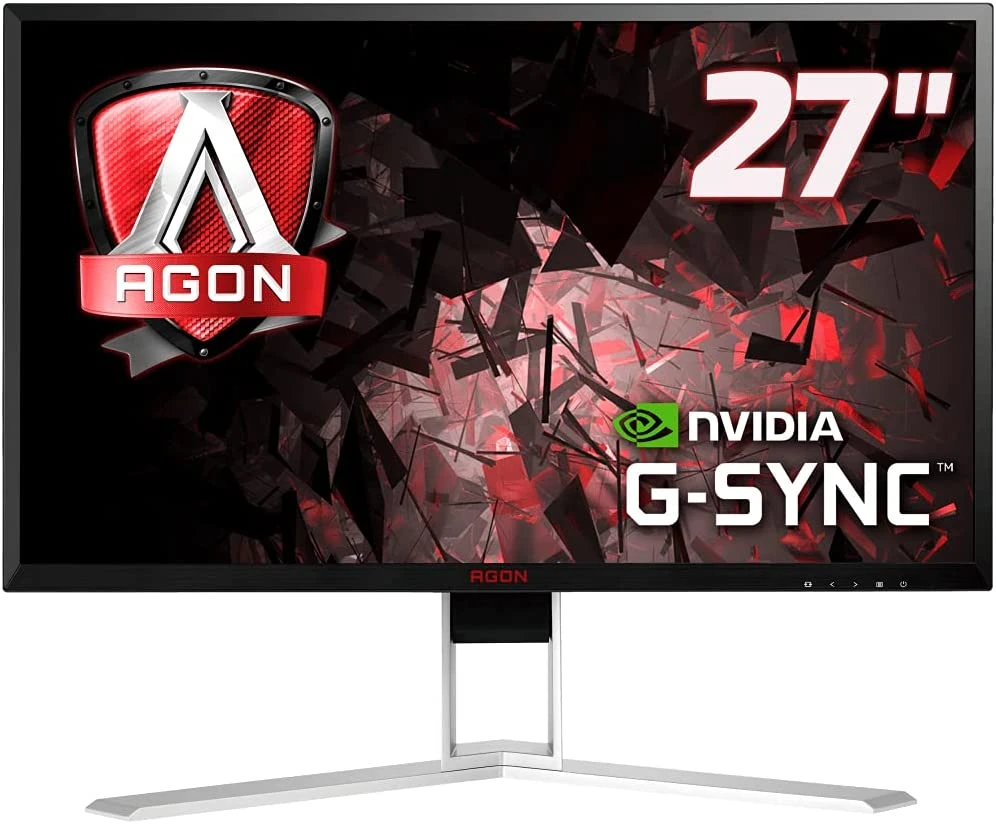 | Check Price | |
Best Pick 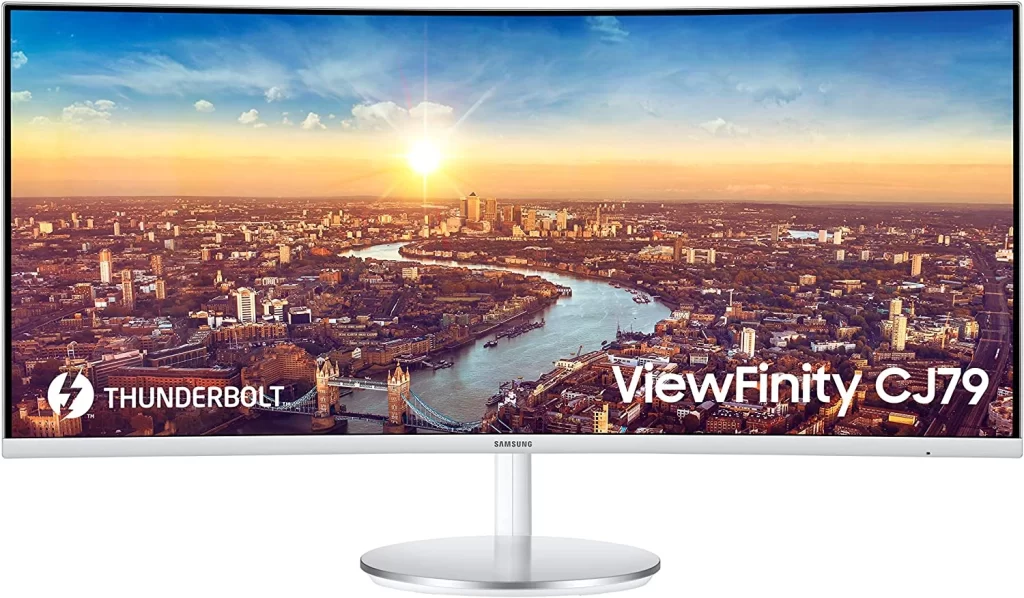 | Check Price |
1. Dell Ultrasharp U2718Q
Best Pick
| Specifications | Details |
| Screen Size | 27 inches |
| Resolution | 3840 x 2160 |
| 1.07 billion colours | 1.07 billion colors |
| Brightness | 350 cd/m² |
| Connectivity | HDMI, DisplayPort, USB-C |
| Dimensions | 24.07 x 7.89 x 21.27 inches |
Let’s dive into my experience with the Dell Ultrasharp U2718Q and its features relevant to the best computer monitor for music production.
First off, the 27-inch 4K screen is stunning. It’s ideal for music production as it offers a large canvas for visualizing multiple tracks and instruments clearly and in detail.
The thin bezels also add to the visual experience, providing a virtually seamless view when using multiple monitors in a setup.
The Dell HDR technology truly sets the Dell Ultrasharp U2718Q apart from other monitors. It combines a greater depth of colours, remarkable clarity, and a high contrast range of shades to create strikingly realistic images.
As a music producer, accurate and vivid colours are essential for editing and mastering tracks, and the Dell HDR technology delivers on that front.
Additionally, the Dell Universal Pairing feature is a game-changer for those who use multiple devices in their workflow.
It allows you to connect up to six compatible RF devices or Bluetooth 4.0, making it easy to switch between devices and keep your workspace organized.
The Dell Display Manager Compatibility is also a great feature that allows you to easily tile and view applications side by side, which is perfect for multitasking.
In terms of brightness, the Dell Ultrasharp U2718Q boasts a brightness of 350 cd/m², making it easy to see every detail in your music production work. The pixel pitch of 0.1554 mm x 0.1554 mm also adds to the sharpness of the visuals.
Pros
- Stunning 4K resolution with thin bezels for a seamless view
- Dell HDR technology for accurate and vivid colours
- Dell Universal Pairing feature for easy connectivity with multiple devices
- Dell Display Manager Compatibility for easy multitasking
- The brightness of 350 cd/m² for clear and detailed visuals
- The pixel pitch of 0.1554 mm x 0.1554 mm for sharpness
Cons
- Price may be on the higher end for some users
- No built-in speakers
2. LG 27UK850-W

| Specifications | Details |
| Screen Size | 27 inches |
| Resolution | 3840 x 2160 |
| Color Support | sRGB 99% |
| Response Time | 5ms |
| Refresh Rate | 60Hz |
| Connectivity | USB Type-C, HDMI, DisplayPort |
| Dimensions | 24.1 x 9.2 x 22.3 inches |
Now, let’s dive into my experience with the LG 27UK850-W and its features relevant to the best computer monitor for music production.
First off, the 27-inch 4K UHD IPS display is stunning. It provides crystal-clear visuals, making seeing every detail in your music production work easy.
The HDR 10 compatibility also adds to the visual experience, providing deeper blacks and brighter whites for a more immersive experience.
In terms of colour accuracy, the LG 27UK850-W boasts an sRGB 99% colour gamut, making it a great choice for music producers who require accurate and consistent colours when working on their tracks.
The IPS display also provides great viewing angles, ensuring that colours remain consistent no matter which angles you view the monitor.
Another great feature of the LG 27UK850-W is the USB Type-C connectivity. This allows for easy connectivity with compatible devices and provides quick charging.
The AMD FreeSync technology also ensures no screen tearing or stuttering during gameplay or video playback.
In terms of design, the LG 27UK850-W has a 3-Side, a Virtually borderless design that adds to the aesthetic appeal of the monitor.
It’s also great for a multi-monitor setup, as the virtually borderless design provides a seamless view when using multiple monitors.
Pros
- Stunning 4K UHD IPS display with HDR 10 compatibility
- sRGB 99% colour gamut for accurate and consistent colours
- USB Type-C connectivity for easy device connectivity and quick charging
- AMD FreeSync technology for smooth gameplay and video playback
- 3-Side Virtually borderless design for aesthetic appeal and seamless view in a multi-monitor setup
Cons
- Response time and refresh rate may not be suitable for fast-paced gaming
- No built-in speakers
3. ASUS ProArt PA278QV
Staff Pick
| Specification | Value |
| Screen Size | 27 inches |
| Resolution | 2560 x 1440 |
| Panel Type | IPS |
| 100% sRGB and 100% Rec. 709 wide colour gamut | 100% sRGB and 100% Rec. 709 wide color gamut |
| Response Time | 5.0 milliseconds |
| Connectivity | Mini DisplayPort, DisplayPort, HDMI, Dual-link DVI-D |
The ASUS ProArt PA278QV is a 27-inch WQHD monitor designed for creative professionals, including music producers. It boasts an international colour standard of 100% sRGB and 100% Rec. 709 wide colour gamut, providing accurate and consistent colour reproduction.
The monitor is Calman Verified, which ensures excellent Delta E less than two colour accuracy. The factory calibration ensures the monitor delivers accurate colours right out of the box.
The ProArt PA278QV also comes with ASUS-exclusive ProArt Preset and ProArt Palette that provide numerous adjustable colour parameters, making it easy for music producers to fine-tune the colours to their liking.
The monitor has extensive connectivity options, including Mini DisplayPort, HDMI, dual-link DVI-D, audio in, earphone jack, and four USB 3.0 ports. The wide range of connectivity options provides maximum flexibility to connect multiple devices.
The monitor has an ergonomic stand that allows users to tilt, swivel, pivot, and adjust the height, ensuring a comfortable viewing experience. Additionally, the monitor is VESA wall-mountable, providing more flexibility.
Pros
- Excellent color accuracy
- Wide color gamut
- Multiple connectivity options
- Ergonomic stand
- VESA wall-mountable
Cons
- Expensive
- Limited refresh rate
4. BenQ PD2700U

| Feature | Specification |
| Size | 27 inch |
| Resolution | 4K UHD (3840×2160) |
| Panel Type | IPS |
| Refresh Rate | 60 Hz |
| Response Time | 5ms |
| Connectivity | HDMI, DisplayPort, USB-C, USB 3.0 |
As a music production professional, a high-quality monitor is a must-have to ensure accurate colour representation and overall productivity.
The BenQ PD2700U is an exceptional 27-inch 4K UHD IPS anti-glare computer monitor with CalMan-verified and Pantone-validated technology for excellent colour accuracy.
One of the standout features of the PD2700U is the AQCOLOR technology, which BenQ has developed to reproduce accurate colours on professional monitors.
This technology enables music producers to work with colours they can trust, making them create stunning visuals and graphics with precision.
Another notable feature of this monitor is its Eye-Care technology, which reduces eye fatigue and optimizes productivity, allowing you to work for extended periods without feeling strained.
The KVM switch is also an excellent addition, allowing you to expand your workspace and control two systems with one monitor, thus improving efficiency.
The BenQ PD2700U also offers daisy chain connectivity, which enables you to connect multiple monitors seamlessly, freeing up your desk space and reducing clutter.
The monitor’s ergonomic design is another bonus, with tilt, pivot, swivel, and height adjustment capabilities, allowing you to customize your workspace for optimal comfort.
Pros
- Calman verified, and Pantone validated technology for colour accuracy
- Eye-Care technology for reduced eye fatigue
- KVM switch to control two systems with one monitor
- Daisy chain connectivity capabilities for multiple monitors
- Ergonomic design for optimal comfort
Cons
- The refresh rate is only 60 Hz
- Some users may prefer a higher resolution than 4K
5. HP Z27
Budget Pick
| Feature | Specification |
| Size | 27 inch |
| Resolution | 4K UHD (3840×2160) |
| Panel Type | IPS |
| Refresh Rate | 60 Hz |
| Response Time | 5ms |
| Connectivity | HDMI, DisplayPort, USB-C, USB 3.0 |
As a music production professional, a high-quality monitor is a must-have to ensure accurate colour representation and overall productivity.
The BenQ PD2700U is an exceptional 27-inch 4K UHD IPS anti-glare computer monitor with CalMan-verified and Pantone-validated technology for excellent colour accuracy.
One of the standout features of the PD2700U is the AQCOLOR technology, which BenQ has developed to reproduce accurate colours on professional monitors.
This technology enables music producers to work with colours they can trust, making them create stunning visuals and graphics with precision.
Another notable feature of this monitor is its Eye-Care technology, which reduces eye fatigue and optimizes productivity, allowing you to work for extended periods without feeling strained.
The KVM switch is also an excellent addition, allowing you to expand your workspace and control two systems with one monitor, thus improving efficiency.
The BenQ PD2700U also offers daisy chain connectivity, which enables you to connect multiple monitors seamlessly, freeing up your desk space and reducing clutter.
The monitor’s ergonomic design is another bonus, with tilt, pivot, swivel, and height adjustment capabilities, allowing you to customize your workspace for optimal comfort.
Pros
- Calman verified, and Pantone validated technology for colour accuracy
- Eye-Care technology for reduced eye fatigue
- KVM switch to control two systems with one monitor
- Daisy chain connectivity capabilities for multiple monitors
- Ergonomic design for optimal comfort
Cons
- The refresh rate is only 60 Hz
- Some users may prefer a higher resolution than 4K
6. ViewSonic VP3268-4K

| Specifications | Details |
| Screen Size | 32 inches |
| Resolution | 3840 x 2160 |
| Panel Type | IPS |
| Refresh Rate | 60Hz |
| Color Gamut | sRGB, EBU, SMPTE-C, Rec. 709, and DICOM-SIM |
| Connectivity | HDMI 2.0, USB, DisplayPort, Mini DisplayPort |
That’s why I decided to give the ViewSonic VP3268-4K a try. I was impressed with the size and resolution of the monitor.
The 32-inch screen with a resolution of 3840 x 2160 provided plenty of real estate for my projects, and the IPS panel offered wide viewing angles.
One of the standout features of this monitor is its color accuracy. The VP3268-4K supports a wide range of colour gamuts, including sRGB, EBU, SMPTE-C, Rec. 709, and DICOM-SIM, which made it perfect for my needs as a musician.
I was impressed with the Delta E<2 accuracy and the smooth palette of 4.39 trillion colours delivered precise, lifelike images.
Hardware calibration was also a breeze with the VP3268-4K. I appreciated the quick and easy calibration process, which ensured that the colours displayed on the monitor matched the original file. This is a must-have feature for any musician or designer who needs precise colour accuracy.
The four-sided ultra-thin bezel of the VP3268-4K was also a nice touch. It showed off more of my work and less of the monitor, creating a more immersive experience.
The flexible connectivity options, including HDMI 2.0, USB, DisplayPort, and Mini DisplayPort, also made connecting my laptop and other devices easy.
While I was most impressed with the ViewSonic VP3268-4K, a few negatives are worth mentioning. The first is that the monitor only has a 60Hz refresh rate, which may be better for some gamers or those who need a higher refresh rate for their work.
Additionally, the monitor’s stand is more flexible than other models, so adjusting to the perfect viewing angle may be more challenging.
Pros
- Large 32-inch screen with 4K resolution
- A wide range of color gamuts supported
- Quick and easy hardware calibration
- Ultra-thin bezel for a more immersive experience
- Flexible connectivity options
- Excellent color accuracy
Cons
- Only a 60Hz refresh rate
- Stand isn’t as flexible as some other models
7. AOC Agon AG271QX
Best Pick
| Specifications | AOC Agon AG271QX |
| Aspect Ratio | 21:9 |
| Viewing Angle | 178.0 degrees |
| Response Time | 4.0 milliseconds |
| Resolution | 3440 x 1440 |
| Contrast Ratio | 3000:1 |
| Connectivity | Thunderbolt 3, USB Type-C, Mac, E storage drives, external graphics cards |
Now, let’s dive into the features and my experience with the monitor.
As a musician, having a reliable and high-quality monitor is essential for producing and mixing music accurately.
The AOC Agon AG271QX caught my attention with its unique curved design and Intel Thunderbolt 3 connectivity, which allows for single-source power and charging.
The monitor’s 21:9 aspect ratio and ultra-wide WQHD resolution of 3440 x 1440 make it perfect for multitasking, as it provides ample screen real estate for multiple windows and applications.
Additionally, the QLED technology provides a wide range of colours and a 3000:1 contrast ratio, resulting in vibrant and accurate colour representation.
The screen split software, PBP/PIP, is intuitive and easy to use, allowing for efficient multitasking without sacrificing the overall screen real estate.
The Thunderbolt 3 connectivity also allows for easy linking and docking of my laptop, eliminating the need for multiple cables and reducing clutter on my desk.
One of the downsides of the monitor is its relatively slow response time of 4.0 milliseconds, which can result in slight motion blur during fast-paced action scenes in movies or games.
However, this is not a significant issue, as I primarily use the monitor for music production and general office work.
In summary, the AOC Agon AG271QX is an excellent choice for anyone looking for a high-quality monitor for music production and multitasking.
Its Thunderbolt 3 connectivity, intuitive screen split software, and vibrant colour representation make it a reliable and versatile option. Here are some pros and cons to summarize my experience.
Pros
- Intel Thunderbolt 3 connectivity for single-source power and charging
- Ultra-wide WQHD resolution and 21:9 aspect ratio for efficient multitasking
- QLED technology provides a wide range of colours and a 3000:1 contrast ratio
- Intuitive screen split software, PBP/PIP, for efficient multitasking
- Connectivity options available for various peripherals, including external graphics cards and E storage drives
Cons
- A relatively slow response time of 4.0 milliseconds can result in slight motion blur during fast-paced action scenes in movies or games.
8. Samsung CJ791
Best Pick
| Specification | Details |
| Resolution | 3440 x 1440 |
| Aspect Ratio | 21:9 |
| Viewing Angle | 178 degrees |
| Response Time | 4 milliseconds |
| Contrast Ratio | 3000:1 |
| Connectivity | Thunderbolt 3, USB Type-C |
As a music producer, I sought a monitor to handle various colours and provide accurate colour representation.
The Samsung CJ791 monitor caught my attention because of its QLED technology, which provides a wide range of colours and darker blacks with a contrast ratio of 3000:1.
Another great feature of this monitor is its ultra-wide WQHD resolution of 3440 x 1440. The aspect ratio of 21:9 and curved screen design allow for a more immersive viewing experience, which is great for music production.
It also comes with intuitive screen split software PBP/PIP, perfect for multitasking and increasing productivity.
One of the most convenient features of this monitor is its connectivity options. It comes with Thunderbolt 3 and USB Type-C ports, which allow for easy linking and docking of the monitor and laptop with a single cable.
The Thunderbolt 3 also offers a fast processing speed of up to 40 Gbps, four times faster than USB and can provide up to 85W laptop charging.
I am very happy to purchase the Samsung CJ791 monitor for music production. It provides accurate colour representation, an immersive viewing experience, and convenient connectivity options.
Pros
- QLED technology provides a wide range of colours and darker blacks
- Ultra-wide WQHD resolution with curved screen design
- Intuitive screen split software for multitasking
- Thunderbolt 3 and USB Type-C ports for easy linking and docking
- Fast processing speed and laptop charging capabilities
- Immersive viewing experience
Cons
- Expensive compared to other monitors on the market
- Limited adjustability in terms of height and swivel
Buying Guide: How to Choose
If you’re a music producer, having the right equipment is crucial to achieving the best results. A high-quality computer monitor is an essential tool for music production, allowing you to view your projects in the best possible detail.
But with so many available options, choosing the best computer monitor for music production can take time and effort.
In this buying guide, we will help you understand what to look for when buying a computer monitor for music production and suggest 1 or 2 options from the list above that suit your needs.
Screen Size and Resolution
- When it comes to music production, having a large screen with high resolution is a must. This will allow you to see more detail and work more efficiently. We recommend a screen size of at least 27 inches and a resolution of at least 2560 x 1440 (WQHD) or 3840 x 2160 (4K UHD).
Colour Accuracy
- Colour accuracy is crucial for music production, allowing you to see your projects in their true colours. Look for a monitor with a wide colour gamut, such as sRGB or Adobe RGB. Additionally, hardware calibration can ensure that the colour displayed perfectly matches the original file.
Viewing Angle
- A monitor with a wide viewing angle is important to ensure you can view your projects from any angle without distortion or colour shift. Look for a monitor with a viewing angle of at least 178 degrees.
Response Time
- A fast response time is important for music production, as it can reduce motion blur and ghosting. We recommend a response time of 5ms or less.
Connectivity Options
- Ensure that your monitor has enough connectivity options to suit your needs. Look for a monitor with HDMI, DisplayPort, USB-C ports, and a built-in USB hub.
Ergonomics
- Finally, ergonomics is important for long work sessions. Look for a monitor with a stand that is adjustable in height, tilt, and swivel and can also rotate into portrait mode.
Frequently Asked Questions
Q: What is the ideal screen size for a music production monitor?
A: The ideal screen size for a music production monitor should be at least 27 inches or larger to provide enough space for multi-tasking and precise detail work.
Q: What is the difference between IPS and TN panels?
A: IPS panels provide better colour accuracy and wider viewing angles, while TN panels offer faster response times and lower input lag. An IPS panel is usually preferred for music production to ensure accurate colour representation.
Q: Do I need a 4K resolution monitor for music production?
A: A 4K resolution monitor is not essential for music production, but it can enhance your workflow by providing more screen real estate and finer detail. However, a monitor with high colour accuracy and a wide colour gamut is more important than resolution.
Q: What is the importance of a high contrast ratio in a music production monitor?
A: A high contrast ratio allows for better differentiation between darker and lighter areas of the image, which is important for accurately viewing audio waveforms and visualizing other audio data.
Q: Is it necessary to calibrate my monitor for music production?
A: Calibration ensures accurate color representation and consistent image quality across devices. It is recommended to use a hardware calibration device for the best results.
Conclusion
In conclusion, choosing the best computer monitor for music production requires careful consideration of various factors such as resolution, color accuracy, connectivity, and ergonomics.
A high-quality monitor can greatly enhance your workflow and make your music production experience more efficient and enjoyable.
Whether you’re a professional music producer or a hobbyist, investing in a good monitor can make a difference in quality. So take the time to research and compare different options and prioritize your preferences.


